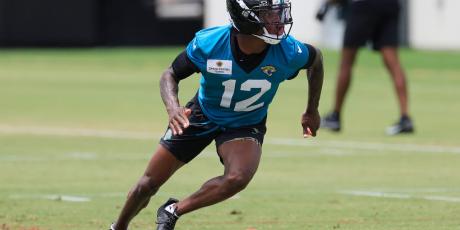The Most Predictable Tight End Stats

One of the main trendsetters in fantasy football drafts is how players performed in the previous season. Looking strictly at past performance without understanding which stats are sticky and which aren't can be dangerous. The goal of this study is to uncover which frequently referenced previous-year stats for tight ends are reliable indicators of future performance and which ones may be misleading.
This article has been updated to reflect data through the 2022 season.
More Predictable Stats: QB | RB | WR
Methodology
For this study, every tight since 2012 that saw at least 30 targets in a season was included. Using this sample, I compared their numbers to the following year, running a correlation for 12 common receiving categories.
The decision to use per-game stats is based on the fact that total games played are extremely unpredictable for all positions—tight ends with an ADP in the top 200 over the last 10 years saw a year-to-year correlation of .20 for games played, which was actually the highest among all positions, but still a weak year-to-year relationship. With the variance in games played, year-long volume stats naturally showed a low year-over-year correlation over the entire sample. (The exception to using per-game stats here is red zone targets since even the players with the most targets in the red zone still see a relatively low number in a given season.)
The table below lists the year-to-year correlations for those 12 tight end stats using the methodology described above:
| Stat | Y/Y Correlation |
|---|---|
| Rec Yards/Game | 0.68 |
| Half-PPR Points/Game | 0.64 |
| Receptions/Game | 0.63 |
| Targets/Game | 0.62 |
| Share of Team Targeted Air Yards (NextGen) | 0.61 |
| Average Targeted Air Yards (NextGen) | 0.58 |
| Target Share | 0.51 |
| TD/Game | 0.35 |
| Yards/Target | 0.34 |
| Catch Rate | 0.30 |
| Red Zone Targets | 0.17 |
| TD Rate (TDs/Targets) | 0.15 |
Notable Tight End Stats
We know fantasy football is a volume game and it should be noted that targets and receptions per game are among the most consistent year-to-year stats for tight ends. In turn, tight ends put up quite reliable yardage numbers, attributable to their sustainable average depth of target (aDOT) aka targeted air yards (TAY).
Using Air Yards for Fantasy Success
This article explains the importance of air yards as it pertains to predicting fantasy football success—specifically looking at aDOT and RACR (Receiver Air Conversion Ratio). In short, we want to find out how efficient a player is at their most common depth of target. RACR captures just this and combined with aDOT, we can measure a player's receiving yards with great confidence.
The Red Zone: Not to be (Overly) Relied On
Although tight ends are often thought of as dominant red zone threats, the fact of the matter is that even the most heavily targeted players near the goal line rarely see more than 25 targets inside the 20 over the course of a season
Since only a select few tight ends see significant red zone volume, their year-to-year red zone efficiency as a group is extremely volatile. We should use tight end scoring rates and market share numbers to decide if a player is expected to regress to the mean, rather than as a sign of things to come while going after the few tight ends that do see consistent red zone work
Bottom Line
When considering how a tight end performed in one year in hopes of applying that data to the next season, there are a few key points to note:
- Tight ends tend to maintain their target volume from one year to the next.
- Air yards and target depth have proven to be among the most stable year-to-year metrics and can help predict yardage output for tight ends.
- Most tight ends tend to not see much red zone volume, so their efficiency metrics can swing wildly from year to year. Tight ends with consistent red zone work are very valuable commodities.



















